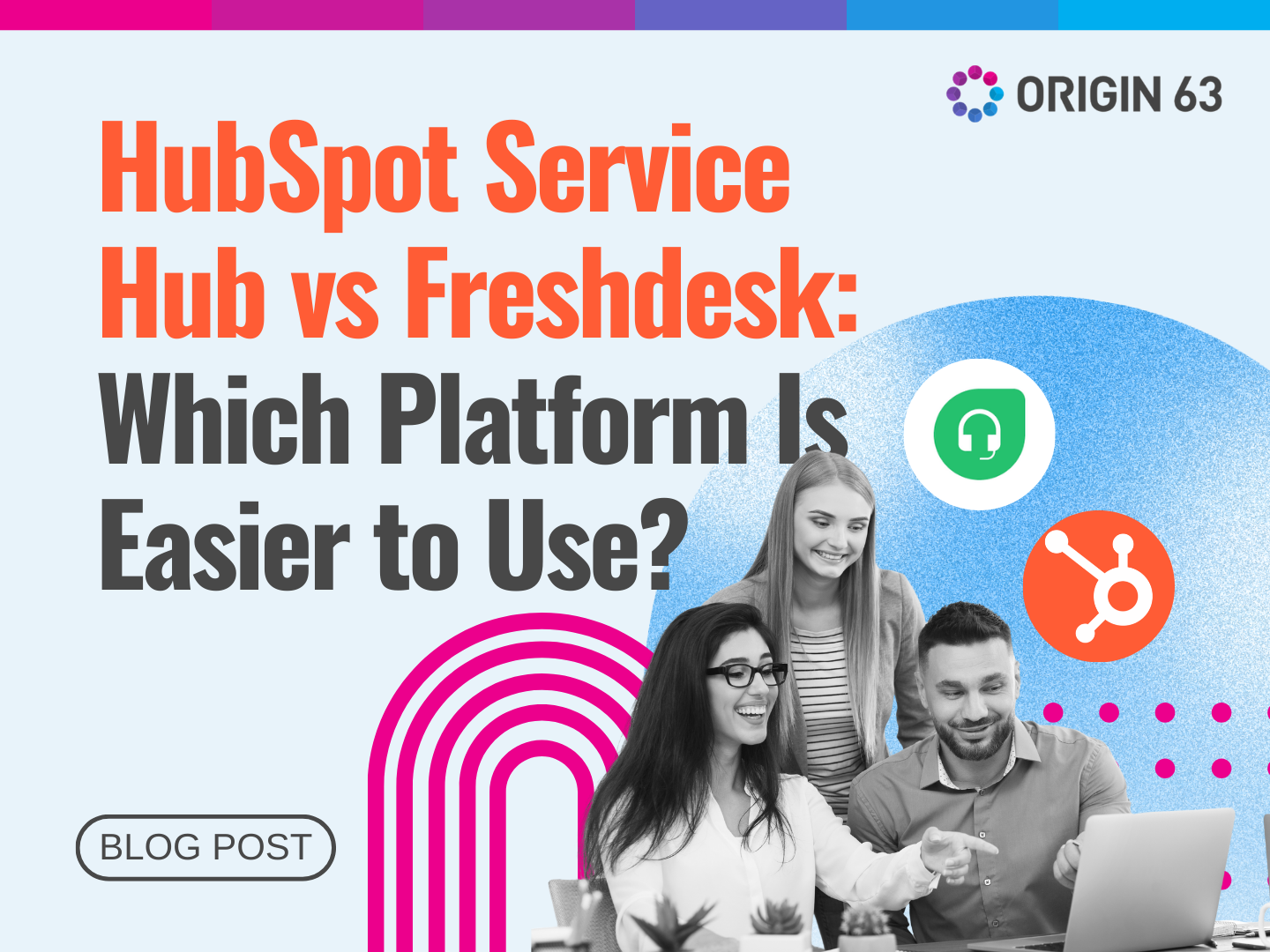Customer success expectations include seamless experiences, maximum value, and mutually beneficial relationships. But in reality, companies often fall short. Loyalty wavers as expectations misalign, and the "success" part proves elusive.
Turning expectations into reality takes work. You need to find the root of the problems blocking you from success and fix them.
This post will help you do that by exploring the ten most common hurdles disrupting customer success initiatives and tangible ways to overcome them. With the right strategies, you can align teams, demonstrate value, and exceed customer expectations.
1. Misaligned Internal Teams

One major obstacle to customer success is misalignment between internal teams, such as sales, support, and customer support. It happens when each department uses separate systems and workflows. There's no unified view of the customer across the organization.
As a result, customers fall through the cracks during handoffs between teams. The salesperson passes the client to onboarding, who passes them to support and renewal. But there's limited visibility between these departments.
The customer gets frustrated having to repeat information. Essential details get lost. One team's decisions can undermine another's efforts. Ultimately, this fragmentation leads to a disjointed, inconsistent customer experience that increases churn risk.
So what can you do?
The Solution:
Implementing a customer relationship management (CRM) system like HubSpot Service Hub is the answer. Every team has a single reference for customer data and history.
It has many other benefits, which include:
- Sales, support, and success teams stay aligned with complete visibility into the customer.
- Handoffs are seamless, with full context shared across departments.
- Customer issues never slip through the cracks when data lives in interconnected systems.
- Teams spend less time reconstructing history and more time serving customers.
- Powerful analytics provide insights across the customer lifecycle.
- Automations keep data orderly and processes consistent.
You should also smooth handoff processes through defined workflows and collaborative tools like shared inboxes.
Most importantly, leadership should foster a customer-centric culture across the organization through training, incentives, and processes focused on the overall customer experience vs. individual department metrics.
2. Poor Adoption of Technology
If your platform has confusing menus or user interfaces, customers struggle to use it. They feel overwhelmed trying to figure everything out.
It drags down adoption and satisfaction. People expect platforms to be straightforward and user-friendly. When yours is convoluted, they'll see it as failing to meet their needs.
Customers get fed up and stop actively using your platform. They miss out on its value.
The Solution:
First, simplify and refine your onboarding process to guide new users smoothly. Offer live demos and training resources like videos and manuals to build skills.
- Explain how your product adds value. Help customers see the benefits.
- Show how to make your product part of their daily workflows. Get them to incorporate it.
- Train the customer's team on using features properly. Make sure everyone knows how.
- Offer tailored guidance and advice. Customize to their unique needs.
Doing this education and training increases customers' success with your product. They are likelier to stick around when fully grasping value and usage.
Don’t just sell the product but actively guide customers in adoption. Make learning the product a partnership. It develops their skills and trust in you.
3. Poor Service

Providing a poor service experience is one of the quickest ways to erode customer trust and loyalty. When responses are slow, agents lack knowledge, or communication is unhelpful, customers get frustrated.
Research shows that most consumers would switch to a different brand after one negative customer service experience.
This problem usually happens when support teams are overburdened, undertrained, or lack context. Customers get passed around without resolution. Hold times drag on. Questions go unanswered. Problems take far too long to resolve.
The Solution:
Set clear service level agreements (SLAs) for response times. Define standards at each tier level, whether self-service, email, chat, or phone support. Communicate these targets to customers.
To meet your SLAs, train your customer service agents to be patient, empathetic, and knowledgeable about your products. They should build genuine rapport with customers in frustrated states.
Closely monitor customer satisfaction (CSAT), net promoter scores (NPS), repeat contact rates, and churn. Feedback will highlight areas for better support.
Additionally, enable self-service options to deflect volume from agents. A comprehensive knowledge base with FAQs, training materials, and troubleshooting guides allows customers to find instant answers 24/7.
The goal is to minimize wait times and empower customers to solve issues independently. It preserves agents' time for higher-touch cases.
4. Slow and Irrelevant Outreach
Sending the same generic messages on a fixed calendar to all customers results in irrelevant, untimely outreach. Customers are overwhelmed by blanket emails and ignore most of them.
A one-size-fits-all cadence fails to account for individual circumstances. Milestones pass without proper guidance because behaviors don't trigger messages.
The Solution:
Leverage customer data and marketing automation to send hyper-personalized outreach. Segment your leads according to metrics like their demographics and engagement. Then, tailor messaging based on interests, roles, usage patterns, etc.
For example, you can set up workflows to recommend specific features when customers show disengagement. You can create triggers mapped to lifecycle stages, from onboarding to renewal.
It demonstrates you know your customers as individuals. Timely, relevant outreach guides customers, while ill-timed, spray-and-pray tactics are ignored.
5. Lack of Engagement

Customers who don't actively use your product can't realize its value. Non-engaged customers are at high risk of churn.
You’ll notice your customers become disengaged when they use your products less. Metrics like logins, feature adoption, and activity levels dropping over time signal this waning interest. They may also rarely open or respond to outreach emails or in-app messages.
The Solution:
Use analytics to identify inactive users quickly via metrics like logins, feature adoption, and page views. Proactively reach out to re-engage them.
Ask for feedback on why they struggle with adoption. Look for complex workflows and user experience barriers to simplify. Clearly communicate features and benefits tied to their goals.
You want to remove obstacles to engagement while highlighting value drivers. This motivates regular product usage, allowing customers to realize outcomes. It builds skills, trust, and loyalty over time.
6. Insufficient Resources
When customer service reps are overworked and understaffed, they can’t provide the personalized guidance each customer deserves.
Then, your employees and customers are frustrated. Nobody wins.
The Solution:
You can judge best whether you can solve your problem by hiring more reps. You can also meet with team leaders and gauge their opinions.
However, you don’t always need more agents. Sometimes, you can simply use your resources wisely.
For example, you can segment customers by level of need so you can give attention to the accounts that need it most. You can also automate standard outreach for common questions to free up managers for high-touch accounts.
Not every customer concern needs a human customer service agent to resolve it. Provide self-service resources like knowledge bases to enable customer independence.
Self-service doesn’t just free up your agent’s time so they can use it for urgent customer concerns. It can also heighten customer satisfaction.
7. No Loyalty Incentives

Customers keep your business alive. You need them. Reminding them of this fact doesn’t hurt your business. It can even lead to more loyal customers! What hurts your business is taking those loyal customers for granted.
Without special perks for being loyal, there's little motivation to renew their subscription year after year.
The Solution:
You want your customer’s loyalty, so incentivize it. Be generous with your rewards because loyal customers are worth it. A 5% increase in loyal customers can also increase your revenue to more than 25%.
You can do some things to make customers feel valued:
- Develop VIP promotions, discounts, and loyalty programs exclusively for long-standing customers to make them feel valued.
- Highlight exciting new features with each renewal to maintain interest.
- Give surprise rewards to loyal advocates.
Make customers feel appreciated for their commitment while previewing what's next if they continue the journey with you.
8. Unclear Product Value
If customers don't understand the concrete ROI your product provides, they won't invest fully in adoption. You lose out on expansion and renewal opportunities.
It happens when the product value proposition and customer success stories are not documented and shared during sales and onboarding.
Customers won’t understand the concrete ROI your product delivers if you don't explicitly communicate it. Don’t expect them to intuitively connect how your product drives outcomes for their unique use cases.
The Solution:
To avoid this problem, clearly communicate your product’s value as measurable outcomes. For example, you can:
- Create ROI calculators demonstrating the potential financial impact.
- Craft use cases showing specific outcomes you enable.
- Tie product features directly to customers' business goals.
- Leverage customer success stories to showcase value.
Quantifying value accelerates adoption while showcasing real-world examples and builds confidence in achieving outcomes. Conveying ROI motivates maximum engagement and investment in your solution.
9. No Process for Feedback

Without feedback mechanisms, you miss out on improvement insights from those who matter most — your customers. Your team remains unaware of recurring pain points, adoption barriers, and customer frustrations.
You then operate on assumptions rather than hard data. You have no systematic way to track satisfaction metrics over time. Opportunities to enhance value are overlooked without constructive criticism.
This complacency happens when the importance of customer feedback is undervalued or not prioritized.
The Solution:
Proactively seek customer feedback. Here are some positive changes to make:
- Send periodic Net Promoter Score (NPS) surveys to monitor broad satisfaction and loyalty trends across your customer base.
- Analyze in-product behaviors using analytics to identify adoption bottlenecks. Review support tickets and calls to find recurring issues.
- Facilitate user groups and forums for your community to provide candid product feedback and discuss needs.
- Most importantly, act on feedback. Close the loop by updating customers on fixes, enhancements, and why specific requests may not be feasible.
Most importantly, act on feedback. Close the loop by updating customers on fixes, enhancements, and why specific requests may not be feasible.
Soliciting honest feedback, listening intently, and empathetically responding nurtures trust while
10. Lack of Clear Metrics
Without clearly defined metrics and targets, customer success managers lack visibility into the health and growth of accounts. They fly blind without data-driven insights to inform their strategy.
Adoption, engagement, satisfaction, retention, expansion, and renewal metrics help quantify customer outcomes. But, these key performance indicators (KPIs) are often not established or measured consistently.
Trend analysis is impossible when you don’t track metrics over time. You can't tell if changes are improving or worsening outcomes.
This lack of measurement happens when leadership doesn't align the organization around measurable outcomes. But what isn't measured can't be managed or improved.
The Solution:
You should define clear, measurable KPIs representing the customer outcomes most critical to the business, like adoption, retention, satisfaction, and expansion.
Set specific metric goals based on past performance, benchmarks, and growth targets.
Closely monitor KPI trends over time. Produce reports and dashboards analyzing performance by customer segment, product line, or other dimensions.
Share insights across the organization. Use data to identify high-risk accounts, guide onboarding improvements, and showcase marketing campaign ROI.
What gets measured gets managed. Defining the right metrics and goals allows you to direct efforts toward what matters most.
Wrap-Up
Delivering exceptional customer success takes focus and effort. The first step is identifying the barriers preventing you from achieving it.
When you understand common pitfalls, you can proactively solve challenges around misalignment, poor technology adoption, disengaged customers, irrelevant outreach, unclear value propositions, lack of feedback loops, and more.
The key is taking an outside-in perspective to walk in your customers' shoes, listening to their needs, and implementing cross-departmental strategies that enable their success. It nurtures loyal, profitable, long-term relationships that fuel sustainable growth.
Overcome Customer Success Hurdles with Origin 63 and HubSpot
Are these customer success challenges limiting your business? Our customer experience experts at Origin 63 can help. Leveraging the HubSpot Service Hub platform, Origin 63 can design and implement solutions tailored to your needs.
HubSpot Service Hub unites fragmented teams, systems, and data to align your organization around the customer. Meanwhile, Origin 63's strategic guidance optimizes processes and technology adoption to reduce downtime and ensure a smooth transition.
Contact us to learn how Origin 63 and HubSpot can help you overcome obstacles to customer success.













.png?width=90&height=90&name=Arrows%20Partner%20Badge-test%20(1).png)

